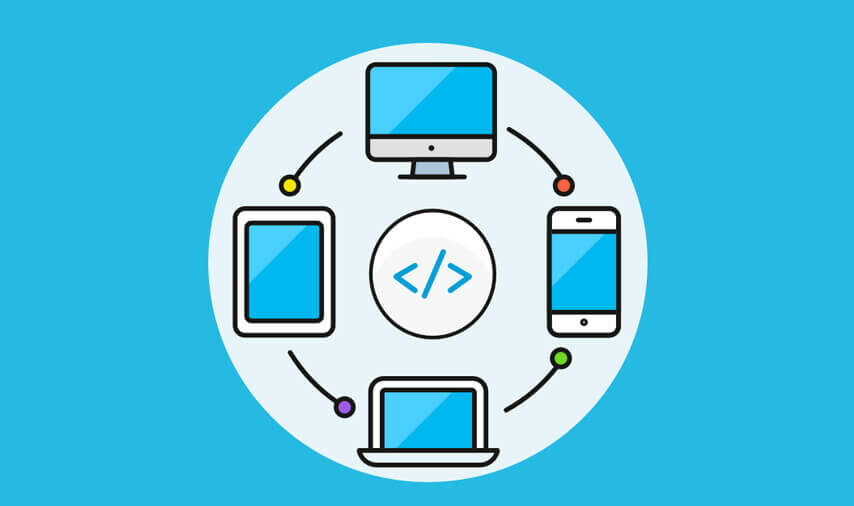Cross-platform apps give businesses and companies great freedom to get a single codebase developed and run it across platforms such as Android and iOS. There is a widely accepted notion that cross-platform apps come with some performance tradeoffs in return for saving on cost and expedited movement to market.
However, some technologies are proving this notion wrong to a great extent, given that apps are developed strategically and with a well-thought-out plan, and the existence of apps such as Instagram, WhatsApp, Facebook, etc., diminish such notions about cross-platform apps.
In this comprehensive post, we will delve into the established system of creating top-notch and high-performance cross-platform apps that give performance and feel like native apps. We have provided the process every Android app development company follows to develop apps for their clients.
So, without further ado, without indulging in any fuss and frills, let’s delve into 6 step cross-platform app development process.
Requriment
Creating a full-fledged cross-platform app is not the job of a single developer, as you need hardcore expertise in prior and after development that sets the trajectory of your app.
So there should be a team at the core that drives the whole process, especially if you are creating a for a startup or even an established enterprise because building an app that is more than lines of code and becomes royalty of app stores requires expertise beyond than just well versedness in coding.
First of all, there should be a product manager acting as a steward for the whole project. Second is the UI/UX designer, who first creates the visuals of how the app should look. UI/UX involves a lot of planning as you have to ensure an intuitive app design that makes it easy for your users to navigate to different parts of your app.
Then, obviously, developers who know the art of converting mockups and designs into a codebase. Then comes the need for the role of QA and testing specialists who ensure the fabric of your app is optimal from every aspect. They check the layers of your app for bugs, performance issues, UX-related flaws, and shortcomings.
6-Step Cross-Platform App Development Process
This 6-step process will cover everything you need to know before embarking on your cross-platform app development.
Plan Ahead for Everything
There is no point in creating an app that has saturated competition in the app stores, and you just add another to the ecosystem. To ensure your app reaches the phones of your target audience, you have to first do market research about the initial idea.
Assume you start creating a today, and it takes you, if assume the least amount of time, two months, to complete, your competition would have climbed further up, making your chances to rank up further lower. It is prudent to first research your idea and check the competition in app stores. If there are already apps that are serving the same purpose, your app will find it hard to make it to your target audience’s phones.
First, business proof your idea and ensure users really need it. If your idea is not and you have found loopholes in your existing competition, ensure you ace every aspect of it.
Once done, outline the core features and functionalities in your app because things are planned prior. Don’t clutter your app with nonsense features, rather, try to incorporate features that are really needed and will serve users better otherwise, the interface would unnecessarily be bloated with elements all around.
Design and Mockups
Once you are done researching and outlining the top features, now comes the stage to visualize all that on UI and UX tools. Use tools for creating design and ensure the design is visually appealing, intuitive, elegant, and decluttered.
There should be enough space between elements so that users don’t mistakenly click any other element while clicking the intended one. Use wireframing tools to take each next step into account as users progress.
Coding/Development
Now comes the time to weave the layers of your app. Here, you will lay the foundation of a codebase that will withstand the load of users and keep your app running seamlessly. This phase is quite critical as you delve into the intricate world of coding and development. Leverage cross-platform frameworks like React Native, Flutter, or any other cutting-edge framework to create a sleek and user-friendly interface. Ensure that the programming language you choose aligns with the goals of your project and that the development team is well-versed in translating design concepts into a functional codebase.
To create a top-notch codebase, you can hire any mobile app development company offering React Native or Flutter app development services.
QA and Testing
It is time to thoroughly and meticulously every layer of your app. Your QA and testing specialist will rigorously scrutinize your app for potential bugs, performance glitches, and UX-related flaws. Rigorous testing ensures that the fabric of your application is robust and flawless, aligning with user expectations and industry standards.
Launch/Deployment
Now, when you have a thoroughly test and refined app in hand, it is time to launch it into the digital landscape. This phase is where your cross-platform app will be accessible to a wide audience. Ensure you are in compliance with app store guidelines and following a strategic approach while deploying your app.
Ongoing Maintenance and Support
Now, when you are done marketing your app and your app has started getting the deluge of users, you will accrue real user feedback that would be a goldmine for you to improve and develop your app accordingly. Ensure you cater to every review and rating and optimize your app accordingly so later users don’t have to face the issues. Do regular security checks and audits to ensure your app remains optimal.
Conclusion
If you find the process quite risky, tiresome, self-draining, and time-consuming, you can give out the Because it is cross-platform, you can contact any company giving iOS app development services or Android app development. Sure, the process is long and cumbersome, but it is highly rewarding, once you are done developing, you can reap the benefits of cross-platform apps. Cross-platform apps are highly in demand for the benefits they bring forth.








